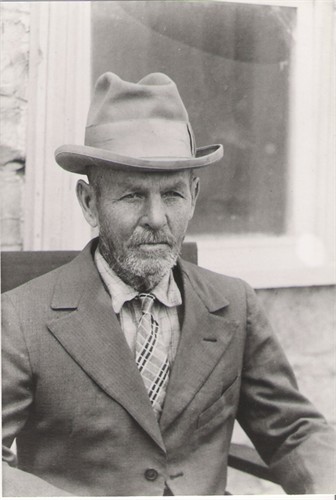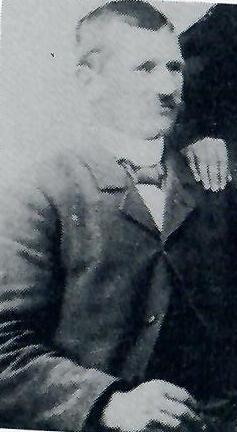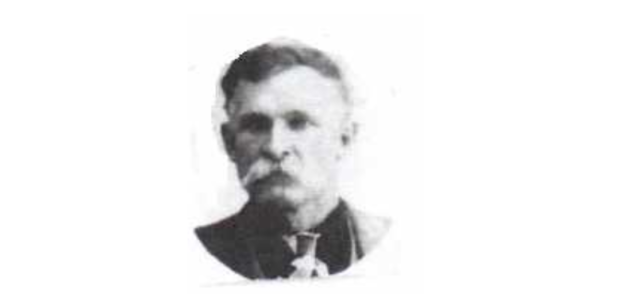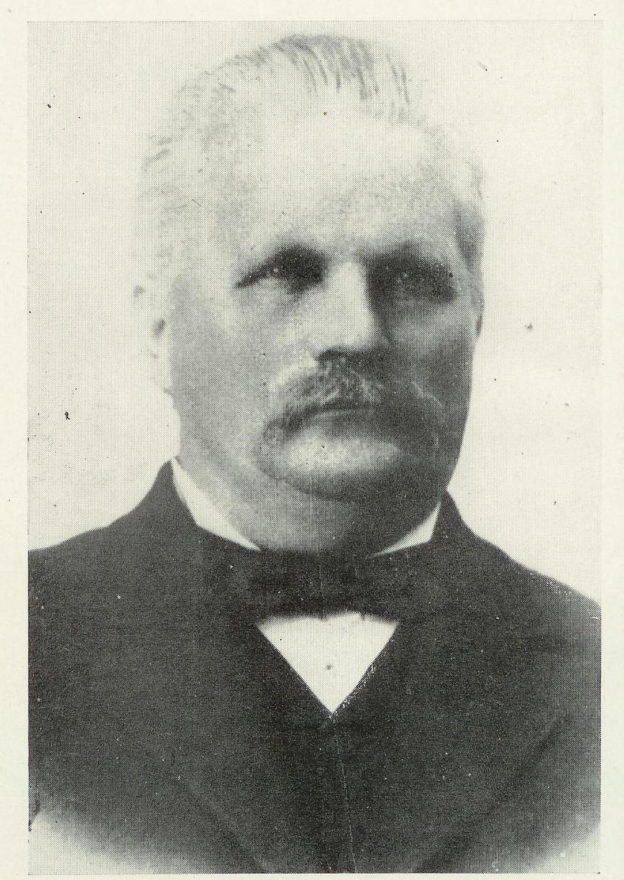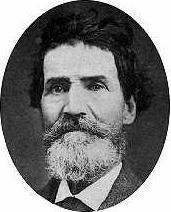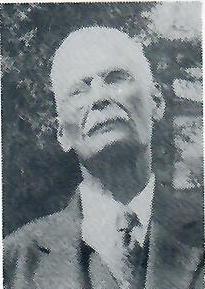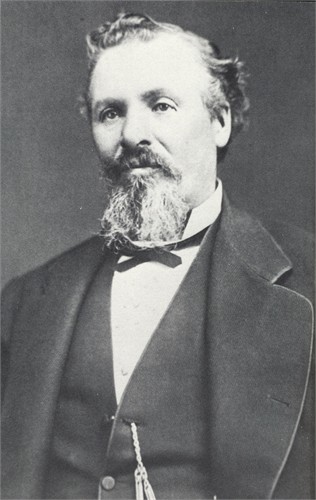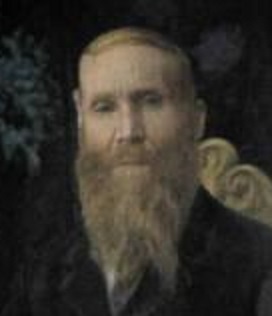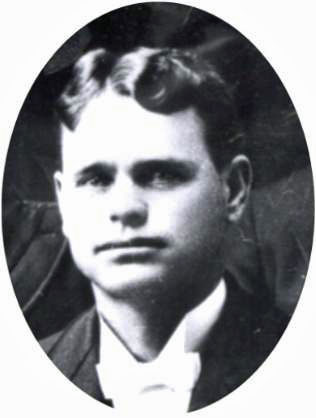Edward Elsey Bradshaw
1860-1936
Edward Elsey Bradshaw was the fifth of nine children born to Samuel and Mary Ann Elsey Bradshaw. He was born May 29, 1860 in Tooele, Tooele County, Utah.
Mary Ann was an English convert and lived in Virgin, Utah,, but at the time had gone to Tooele to see her mother and step-father. They had just arrived from England. Here is where her son Edward Elsey Bradsahw, was born. Soon after his birth they returned home. His brothers and sisters were Sarah Ann, Samuel, Ira Elsey, William A., Mary Ann, Emma Elsey, David Elsey and Joseph Elsey.
Mary Ann, the mother, died of pneumonia when Edward was 11 years old, and young Edward’s grandmother, Ann White, cared for the children for a while after her death.
Samuel Bradshaw was a mason by trade, and Edward probably helped him build houses in and around Virgin. He went to school very little. After Mary Ann’s death, Samuel married a widow, Annie Ballard, with five children. She was later killed by a fall from a wagon. He then married an immigrant from Switzerland, Annie Bruppacker, who was a convert to the Church. They had four children: Benjamin, Esther and a pair of twins, Ugene and Unis, who died in infancy. Nothing else is known of them.
At age 21, Edward married Mary Ellen (May) Owens, daughter of Horace Burr and Sally Ann Layne Owens. Their courtship took place in Virgin. May was born July 14, 1864 in Fillmore, Utah. They took their endowments and were married October 12, 1881 in the St. George Temple. They left and went to Salt Lake City for their household things, then went on to Virgin. There they rented a room where their first baby, Ellen Elsie (Nelle), was born, October 2, 1882.
Virgin was a small town on the banks of the Virgin River, about three of four blocks wide. There was no room for more homes. The original owners did not want to leave so young couples were forced to go elsewhere.
Edward Elsey Bradshaw and May Bradshaw joined a company that left for Arizona to colonize new land. Her father, Horace Burr Owens Sr., and brother, Burr Jr., left with their families in November, 1882. Although they had a pleasant trip traveling by wagon, it was a little cold for their one-month-old child. When the baby needed a bath, Edward would take a kettle from the fire, put coals in it and put it in the wagon, which made it nice and cozy.
They arrived in Woodruff, Arizona on December 12, 1882 where May’s uncle James Clark Owens, welcomed them. After a visit they went on to Snowflake to visit May’s aunt, Martha Layne Stratton. Then they went on to Pinedale to visit her brother, Ardene, and family and sister, Medora Gardner. They had nice visits before returning to Woodruff where they bought a lot and built a small frame house, moving into their home April 4, 1883. They started immediately making improvements on it.
The dam on the Little Colorado went out repeatedly for several years. People kept hoping each one built would be the last, but it proved to be a continuing occurrence.
On February 28, 1884 their first son, Samuel Silas, was born. May then had a severe sick spell which affected her memory, and it was never very good after that time.
In June they made a trip to Utah taking May’s sister, Alameda, and J.D. Smithson to be married in the St. George Temple. After their return another son, Edward Estelven was born, June 6, 1885. He was a very sick baby and died January 9, 1887. Ira Reynold was born July 31, 1886 and died July 27, 1887. Vilate was born February 18, 1888 and died February 12, 1890. Emma was born October 1, 1889 and Hyrum, April 6, 1891. Many of the babies died during these years because of measles, whooping cough, croup and grippe.
In May 1891 the family decided to homestead a farm in Pinetop, Arizona taking merchandise from the ACMI mercantile store. The store later gave out so much on credit that it went broke. The Bradshaw family sheared sheep, freighted, cut timber, plowed, as well as made fences and ditches during this time.
On November 7, 1892 Ellis Delon was born. Then another daughter, Annie, was born December 16, 1894, and David Burr was born on November 20, 1896. Lois was born, May 13, 1898. Then on January 27, 1900 they had towns; one of them, Mary, was stillborn but the other, Martha, grew strong and healthy.
Because the children had to go to Woodruff to go to school, they decided to sell their homestead and move to Mexico. Several families made a company and started May 22, 1900. They went by horse and wagon, camping out at night, some 1,000 miles over very bad roads. Edward and May traveled with eight children under 16 years of age. They left one married daughter in St. Joseph, Arizona. They arrived June 17, 1900 at Colonia Morelos in Sonora where they broke new land, made ditches and homes.
Their first home was a tent, then they made adobes and had a home with dirt floors. Lumber was too expensive so they used bamboo cane to hold up the dirt roof.
Until they raised a crop, their main food was boiled wheat, beans and redroot (pigweed greens). When their crop matured, Edward took surplus foot to Douglas, Arizona, 60 miles away, and to mining camps to trade for clothing and other food.
Mexico was a beautiful country with tall grass and yellow poppies. They cut the grass and used it for hay (stock food). We did not know it then, but the poppies caused sore eyes.
On December 1, 1901 John Elmer was born in Colonia Morelos. Preston Clark was born March 11, 1904. Then Joseph Glendon was born January 10, 1906 in Colonia Morelos. He died April 11, 1913 in Hurricane, Utah. Richard, the last of 11 children, was born March 18, 1908 at Fort Apache, Arizona.
In 1905 there were terrific floods down the Bavispe River, practically washing away the town of Colonia Oaxaca.
The Bavispe River took away the Bradshaw’s orchard of about 100 trees, potato crops, horses and heifers, and even the wall of their kitchen was washed out. Losing everything, they decided to leave Mexico and go back to Arizona. They took the post laundry job at Fort Apache. They did the laundry for 110 soldiers, with a washer run by horses, and a mangle ironer. Many of the soldiers, when they found they were being transferred, would leave without paying their bills. The family also had a nice garden spot where Edward raised melons, fruits and vegetables to sell.
There was a new colony opening in San Jose, Sonora, Mexico, so they left Fort Apache on November 1, 1908. It took them three weeks by wagon with little Glendon who had the croup. People were coming from Oaxaca and Morelos up the river to make the San Jose de Rosebello their home. The Bradshaws went there and took 100 acres of land, partly cleared but mostly brushland, mesquite, catclaw, and cactus. There were bulls that hid in bushes in the daytime and at night ate their crops.
In San Jose the family worked very hard, making adobes, housing, ditches, planting and harvesting crops and gardens. They all worked on the new church and school. At the end of four years the Mexican Revolution forced another move. Things became so bad, they were forced to leave in such a hurry, that they left almost everything behind. They left August 12, 1912 and lived in a government camp in Douglas, Arizona, in tents. They lived on government rations, and after a month the government gave free transportation to families who had relatives with home to live. Edward took his family back to Hurricane, Utah. They took a farm there and raised bumper crops, made a nice home, which was the best home they ever had. They all worked in the Ward there, were good singers and always sang in the choir, as they did wherever they lived. They held many positions and always enjoyed their callings. They tried to teach their family the same way.
Edward and May enjoyed doing temple work as much as they could, when they felt like it. They always went to church and kept the Sabbath day holy. On Christmas day 1915, May had a stroke paralyzing her left side. Her limbs were always numb and her moth drawn a little on that side. She kept going to the temple.
The next year October 23, 1916 as they were going to the farm on the dugway between Hurricane and LaVerkin, the team started to run away and May, not wanting to go into the canyon, jumped out, broke her arm and got badly bruised.
When May died, this left Edward very lonely, with two boys to raise. Richard was 10 years old and Preston 14. They had their home there, and had always been very happy in it. Everywhere the family lived they always raised a garden. Edward took great pride in his gardens, lawns, and flowers and loved sharing his fruits and vegetables with family and friends. May’s health had not been too good since she had the stroke and she died February 7, 1919 in Hurricane.
After a while Edward Elsey Bradshaw sold his home to his daughter Lois and husband, just recently married. He took his two boys and went to Arizona, where he visited with his son Sam. Not being able to find contentment there, after several months, they returned to Hurricane. For the next several years he and one or more of his boys lived in different places. They went to Idaho and Wyoming, and finally to St. George, where they lived one year, so he could spend more time in the temple. Each time he’d become restless and go back to Hurricane.
After his boys were old enough to care for themselves, Edward built himself a small cabin on the river near the hot springs. He loved to bathe in them. He had a horse that he rode back and forth to Hurricane. He had two daughters and three sons living there and he’d ride in to visit and do his shopping. He loved to take his accordion and serenade his children, especially on Christmas morning.
Edward Elsey Bradshaw had two or three spells of erysipelas. When this happened, he would go to one of his children’s homes until he felt better. He never let it keep him down long. He also suffered for quite some time with the hemorrhoids, until he finally decided to go to the hospital and have them operated on. It was a very painful operation and he was very sick. However, he didn’t like the treatment he received at the hospital, so he left before being released. He got a ride to Hurricane and went to his daughter’s place. As a result, infection set in and by the time they summoned a doctor it was too late to save him. He suffered so much before he died, November 27, 1936. They buried him beside his wife in Hurricane.
Anita Joy Bradshaw Rheis, granddaughter
Stalwarts South of the Border, by Nelle Spilsbury Hatch, pg 59

